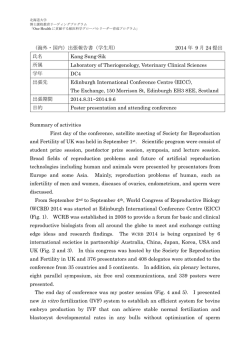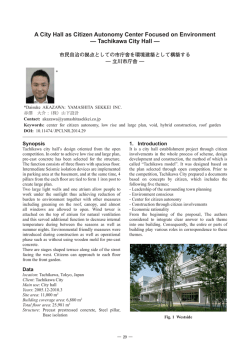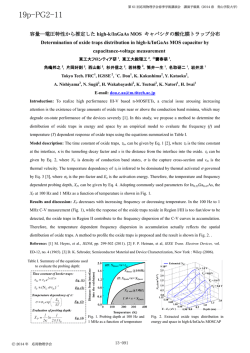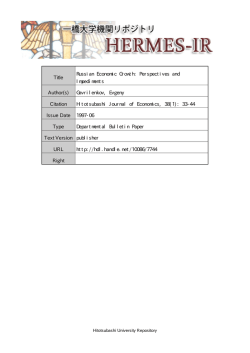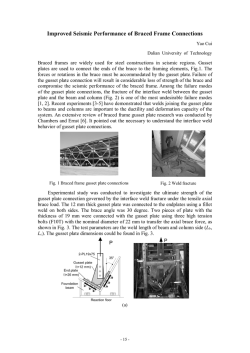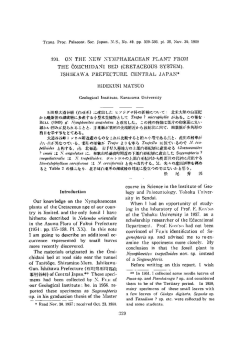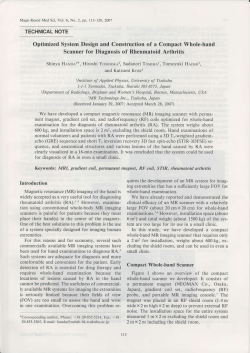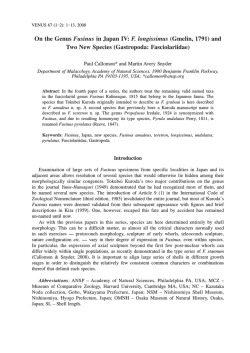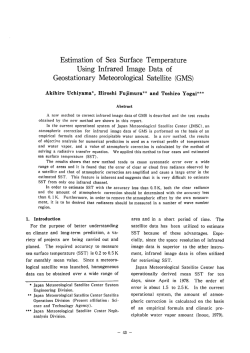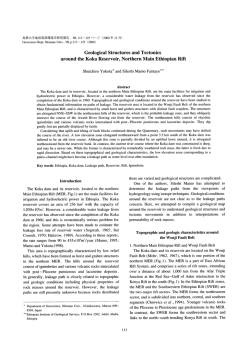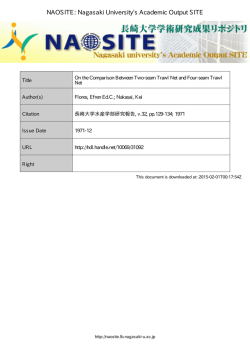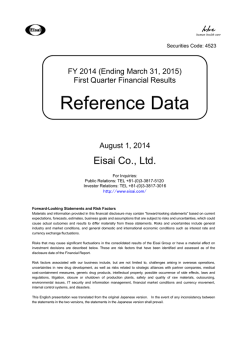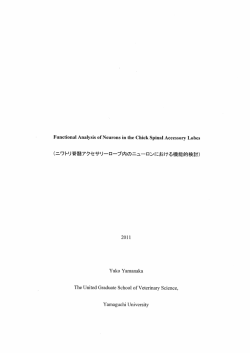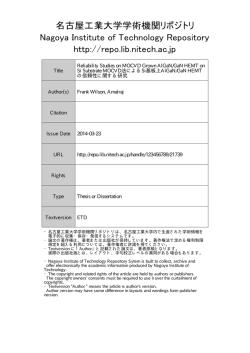
Converging Manufacturing and Service - EU
International Symposium “The Future of Industries” Converging Manufacturing and Service: In the Era of Transformation 27th November, 2014 Junko Okayama, Expert/Fellow Center for R&D Strategy (CRDS) Japan Science &TechnologyK.SAgency (JST) H.T H.N I .S J.C H.T J.O R.T Center for Research and Development Strategy – Japan Science and Technology Agency 独立行政法人 科学技術振興機構 研究開発戦略センター Current Situation of Manufacturing in Japan Shrinkage of the surplus in trade balance. Especially in the electrical equipment industry. Offshore, losing competitiveness in product innovation, etc… Import/Export Trend of Manufacturing in Japan 1 Center for Research and Development Strategy - JST 独立行政法人 科学技術振興機構 研究開発戦略センター Source: METI, MOF Why are Japanese Manufacturers Deteriorating their Position in Global Competition? Catch-up of developing countries. Rise of China as a manufacturing base. High-spec high quality goods are not necessarily major market needs. Struggling to define “What to make?” Diversification in Global Market Shrinkage of Local Market Rapid technological changes in ICT. Center for Research and Development Strategy - JST 独立行政法人 科学技術振興機構 研究開発戦略センター 2 Technology development: A driving force for promoting diversity in the function of “things” Current Status; Digital technology: Diversification of function of “things (manufactured products)” by embedding software. (Fig. 2) Network technology: A big potential to provide services to users through “things” by embedding connectivity via network. (Fig.3) Challenges for Japanese Manufacturers; Japanese manufacturers are good at producing “high-spec”, “high-quality” products (Fig. 1, 2). However, the function of “things” has been widely spreading. (Fig.3) Service industry in the field of ICT Platform Business is entering into the market. Fig.1 “Things”, in original means Hardware E.G.: analog clock, material, drug and etc. Digital Technology Fig.2 “Things”, software embedded Hardware Software Network Technology E.G.: digital clock, consumer electronic, car and etc. Fig.3 Connectivity DB Machine Service Network Human Hardware Hardware Software Software Note: E.G.: smartphone, automatic driving car and etc. - Hardware: “Things”, whose function is described by characteristics of physical matters - Software: “Things”, whose function is described by artificial logic (program) 3 What is the Key to Win the Game in the Era of “Connectivity”? Manufacturing is fiercely competitive market. How can they generate the bargaining power? Prospective directions “Core Technology” with strategic IP management. Dominant “Platform Business” as a result of network externality. Core Technology Platform Business Value Add Manufacturing (Fiercely Competitive Market) R&D Design Center for Research and Development Strategy - JST 独立行政法人 科学技術振興機構 研究開発戦略センター Manufacturing MRO 4 What do we need besides “Process Innovation”? Japan used to have global competiveness in “Process Innovation”. What kind of transformation in the value chain do we need? Research Planning Design Developme nt Produce Sales General Value Chain of Manufacturing Industries Center for Research and Development Strategy - JST 独立行政法人 科学技術振興機構 研究開発戦略センター 5 A System to Converge Manufacturing and Service Platform interacting with consumers is needed in next generation manufacturing system. Strategic use of ICT may lead to create new value add. Value Co-design/ Co-creation Buy Evaluation Consumer Use Iteration, Rapid Prototyping Evaluation Evaluation Maintenance Maintenance Service Platform Design Large Scale products Operation Producer Sales Produce Fig. Eco-System for Next Generation Manufacturing 6 Center for Research and Development Strategy - JST 独立行政法人 科学技術振興機構 研究開発戦略センター What is the Shape of Future Industry? Would “Platform Business” become the “Umbrella” of Future Industry? How should we strategically use ICT in the future industry? Smart City System Energy System Smart House System Monodzukuri (Manufacturing) Healthcare System Center for Research and Development Strategy - JST 独立行政法人 科学技術振興機構 研究開発戦略センター Food Production System Mobility System Infrastructure & Hazard Mitigation System 7 Major R&D Programs in Japan Program Outline SIP*1 Promote ST&I through R&D overlooking from basic research to (Cabinet Office) application and commercialization by cross-ministerial cooperation. Agenda and PD are decided by CSTI*2. 10 projects including “Innovative Design/Manufacturing Technologies” are running. Approx. 50B JPY/year is supported (in total). Center of Innovation Program (MEXT*3) Support for large-scale IAG*4 cooperative research & innovation to meet potential societal needs. Three visions; Smart life care, Smart Japan, Active sustainability 100M to 1B JPY/year is supported to each centers. TIA*5-nano Global open innovation hub set up by integrally utilizing the world class nanotech research resources. (AIST, NIMS, University of Tsukuba, KEK) Focusing on nanoelectronics, power electronics and etc. Center for Research and Development Strategy - JST 独立行政法人 科学技術振興機構 研究開発戦略センター *1 SIP: Cross-ministerial Strategic Innovation Promotion Program *2 CSTI: Council for Science, Technology and Innovation *3 MEXT: Ministry of Education, Culture, Sports, Science and Technology 8 *4 IAG: Industry Academia and Government *5 TIA: Tsukuba Innovation Arena Discussions What would the shape of future industry be? What would be the role of future manufacturers? What kind of re-design is needed in the innovation ecosystem and what would be the role of government in this transformation? Center for Research and Development Strategy - JST 独立行政法人 科学技術振興機構 研究開発戦略センター 9
© Copyright 2025
